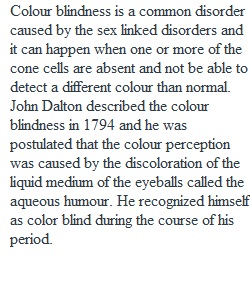


Q Morgan and his students observed spontaneous mutations in fruit flies, crossed the mutant flies and recorded recombination frequencies to create the first chromosomal map. Let’s consider the importance of knowing gene locations on chromosomes and how we can use simple organisms to help us understand complex problems. Read the following articles to help in your clarification between “linked genes” and “sex-linked genes.” • Genetics and Genomics Timeline (2004). 1910 (Links to an external site.). • Genetics. (nd). Sex Linkage (Links to an external site.). Because males are hemizygotic for their traits (or heterogametic regarding their sex chromosomes)….XY…..they provide a relatively “easier” tool for observing some traits in the offspring. Morgan used this trend to observe that certain traits are linked to a particular sex-determining chromosome. This means traits on the X chromosome (“sex linked genes”) were used to advance our broader understanding of “gene linkage” and how crossing-over for any homologous pair can lead to recombinant phenotypes in the progeny. Let’s discuss the following: • What does it mean for genes to be “linked”? • What does it mean for genes to be sex-linked? • Why is it important to know gene location on chromosomes? Next let’s identify some of the X-linked traits and disorders in humans. To prepare: • Browse the website National Center for Biotechnology Information (NCBI) (Links to an external site.) • Consult the Online Mendelian Inheritance in Man (MIM) (Links to an external site.) In your first post identify and describe an X-linked disorder (put the name of the disorder in the first line of your post). Choose one not yet posted by someone else in the class. Explain how this trait was discovered, Discuss preventions/treatments for this trait due to its location on the X chromosome. Evaluation This discussion will be graded using a rubric. Please review this rubric prior to beginning the discussion. You can view the rubric by clicking on "Discussion Rubric" on the Course Rubrics page within the Start Here module. All discussions combined are worth 25% of your final course grade. Consult the Discussion Posting Guide for information about writing your discussion posts. It is recommended that you write your post in a document first. Check your work and correct any spelling or grammatical errors. When you are ready to make your initial post, click on "Reply." Then copy/paste the text into the message field, and click “Post Reply.” To respond to a peer, click “Reply” beneath her or his post and continue as with an initial post.
View Related Questions